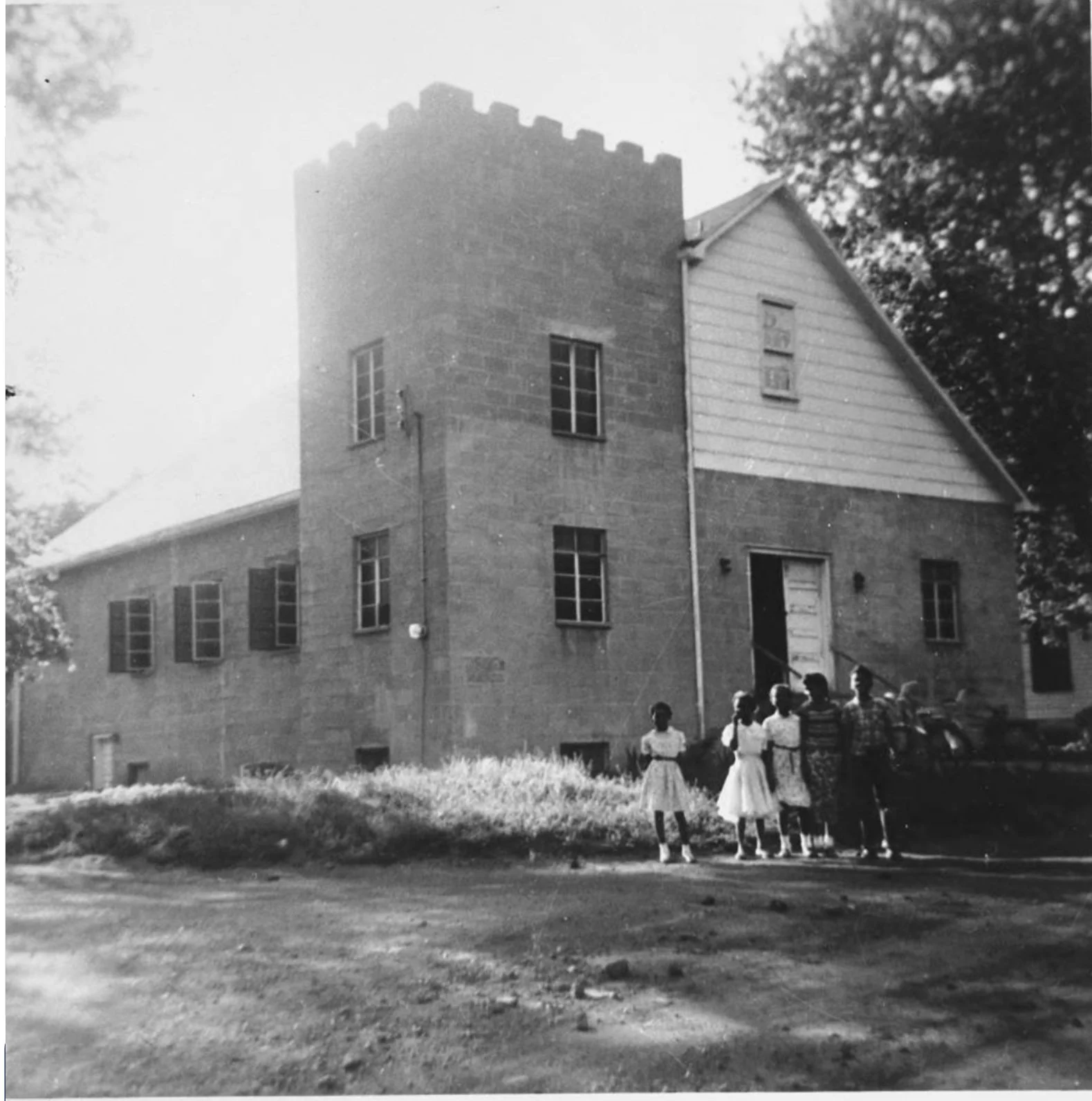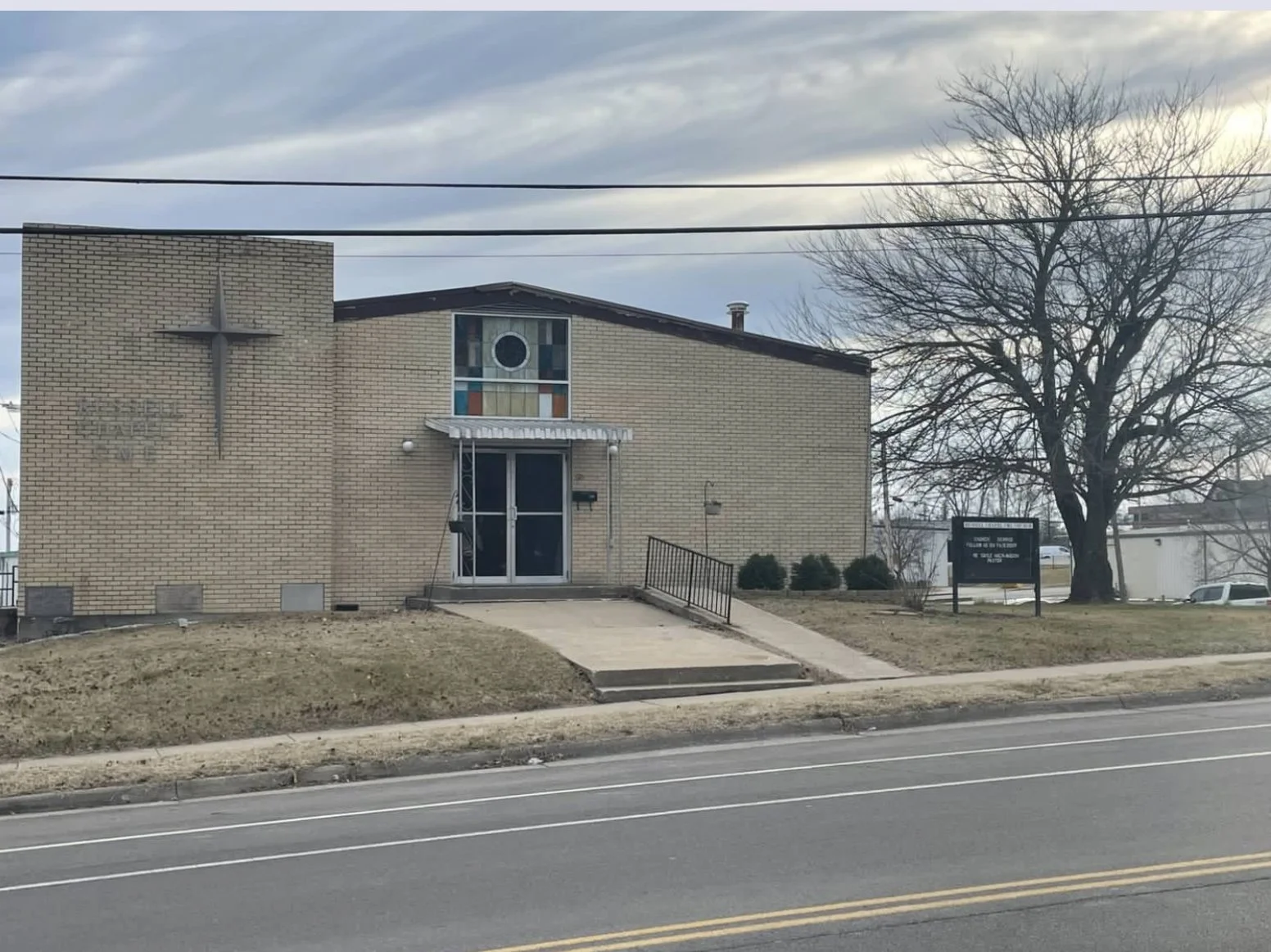M.L.K Day at Russell Chapel and Prince Hall Freemasonry
On January 16, 1970, the Columbia Missourian reported that 120 Hickman High School students received special permission to celebrate Martin Luther King Jr. Day at Russell Chapel Christian Methodist Episcopal Church. Less than two years earlier the civil rights leader and champion of non-violence had been assassinated in Memphis, Tennessee. James Earl Ray, who was convicted of the murder, escaped from the Missouri State Penitentiary in Jefferson City by hiding in a bread truck in 1967 before assassinating King in 1968. The King Family has said the murder was the result of a conspiracy by the U.S government, the mafia, and Memphis police.
The federal holiday honoring King was signed into law by President Ronald Reagan in 1983, but it was not observed until 1986. It is scheduled near King’s birthday on January 15th. But in 1970, the 120 Hickman High School students, an equal number of black and white according to the Missourian, advocated for the creation of a national holiday. Six students approached school administration proposing a day of observance and discussion. The administration, aware of differing opinions, granted the request but only excused students who could provide a note of parental permission. This excerpt from the Missourian article describes the students’ motives:
“Most students also felt their action, even within a limited score, could be influential now and in the larger society.
‘What happens in high school influences what happens later,’ a black student said. ‘We can influence the older people, but we have to start small and then grow in influence. It is important for each individual to see the problem within himself and then work from there.’
But the students felt the immediate problem for them to tackle was to try to reach those students at Hickman who did not attend. As one student noted: ‘We've got to reach those lingering on the border line.’
Students decided the best way to promote change was for blacks and whites to ‘get together’ at informal social events. Two discussion groups proposed a dance that would emphasize this ‘togetherness’ between races. Another group suggested the formation of a committee made up of an equal number of black and white students to hear student grievances and present them to the administration.
Whatever the final outcome of Thursday's observance, students agreed it was, at least, a big step forward. ‘I thought it was beautiful,’ Bobby Cooper, a black student, said. ‘Things look like they're changing.”
The entire day of speeches and discussion was held at Russell Chapel Christian Methodist Episcopal Church. The church, still in existence today, is located 108 East Ash Street. It was organized in 1922 and erected its first building in 1929, rebuilt it in 1952 after urban renewal, and opened the present structure in 1965. The two older cornerstones are preserved and, along with the current cornerstone are displayed in the front wall of the current structure (see gallery below). All three stones were laid by local Prince Hall Freemasons, the oldest and largest predominantly African-American fraternity in the world.
Prince Hall Freemasonry is named after its founder, who established the first lodge in 1784. Prince Hall was an abolitionist and leader of free black people in Boston, Massachusetts. He is considered the founder of Black Freemasonry in the United States. He also formed the Grand Lodge of North America and was unanimously elected its Grand Master, serving until his death in 1807. Columbia still has a lodge today, Rising Sun Lodge #164, they meet at 2100 Burlington Street.
The original Russell’s Chapel was constructed in or near what is today’s Douglass Park in 1929, then a black neighborhood. Urban renewal in the 1950s created the park around Columbia’s black only swimming pool and black only Douglas School. The original Russell’s Chapel, along with many black homes and businesses, was demolished and reconstructed elsewhere in 1952 to create the park and public housing that still exist today.
The original Russell’s Chapel (circa 1929), now demolished
From the State Historical Society of Missouri and Daniel Boone Regional Library
The Russell Chapel (circa 1965) on Ash Street
Taken by Matt Fetterly on January 16, 2023
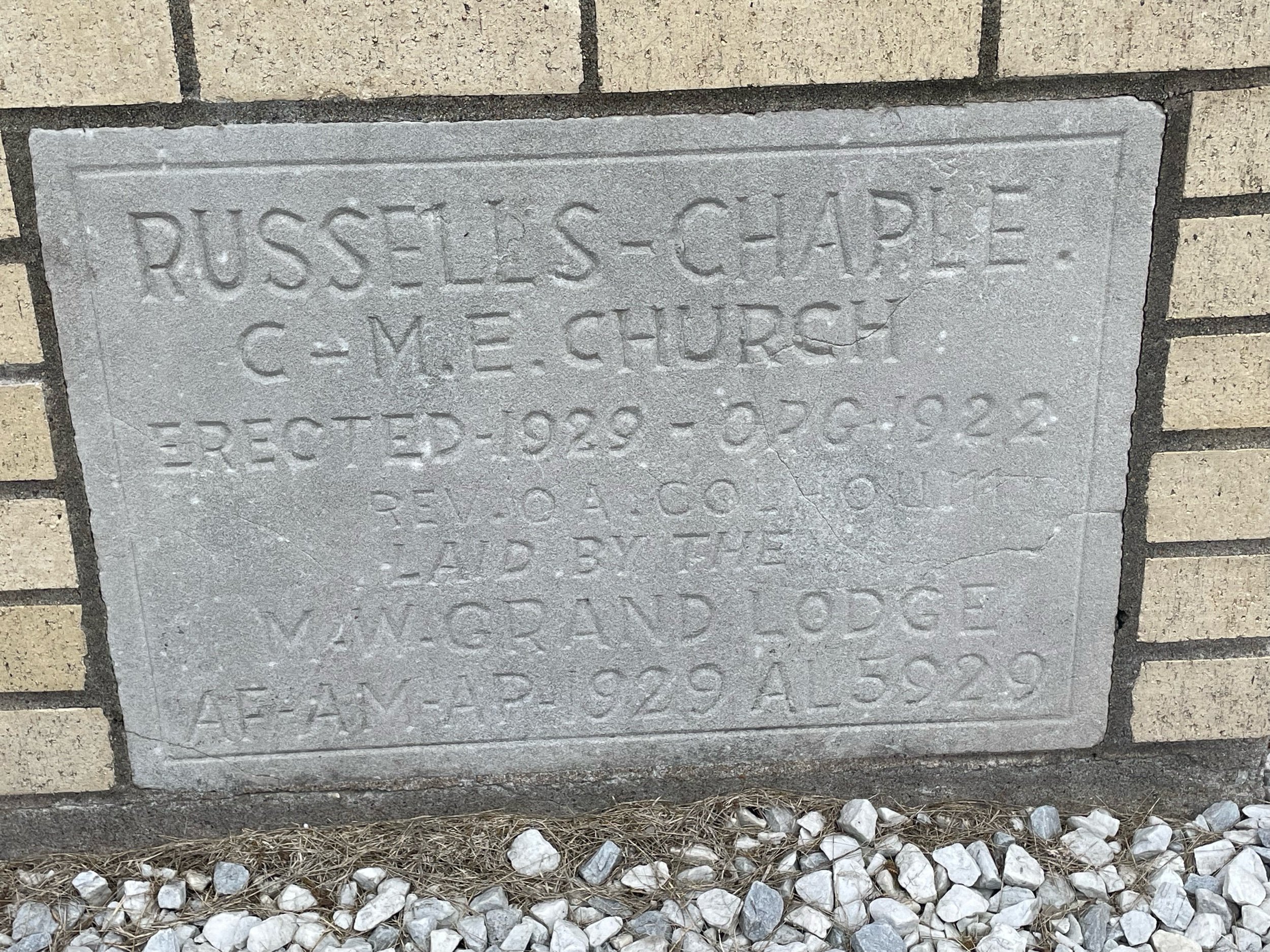
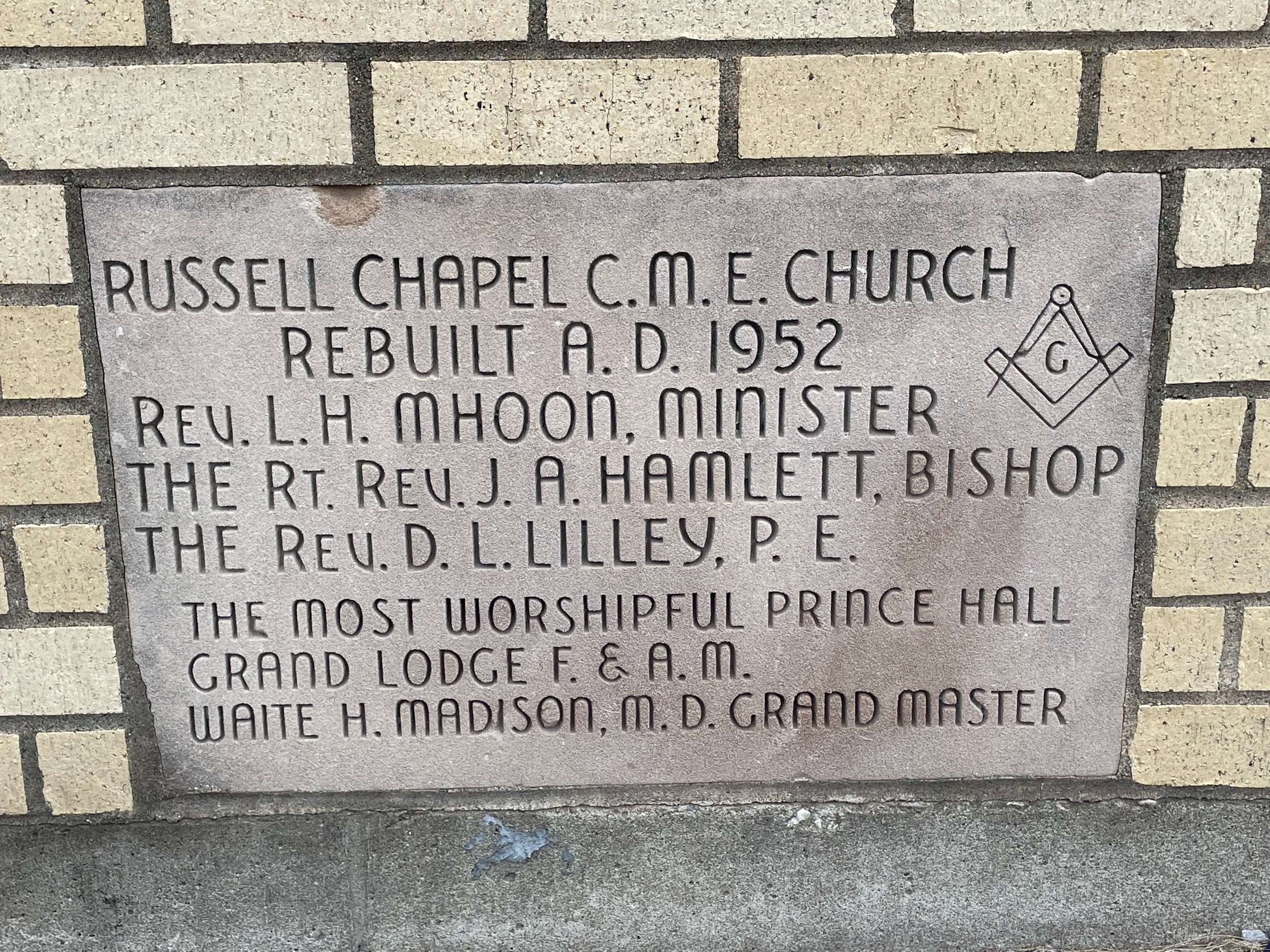
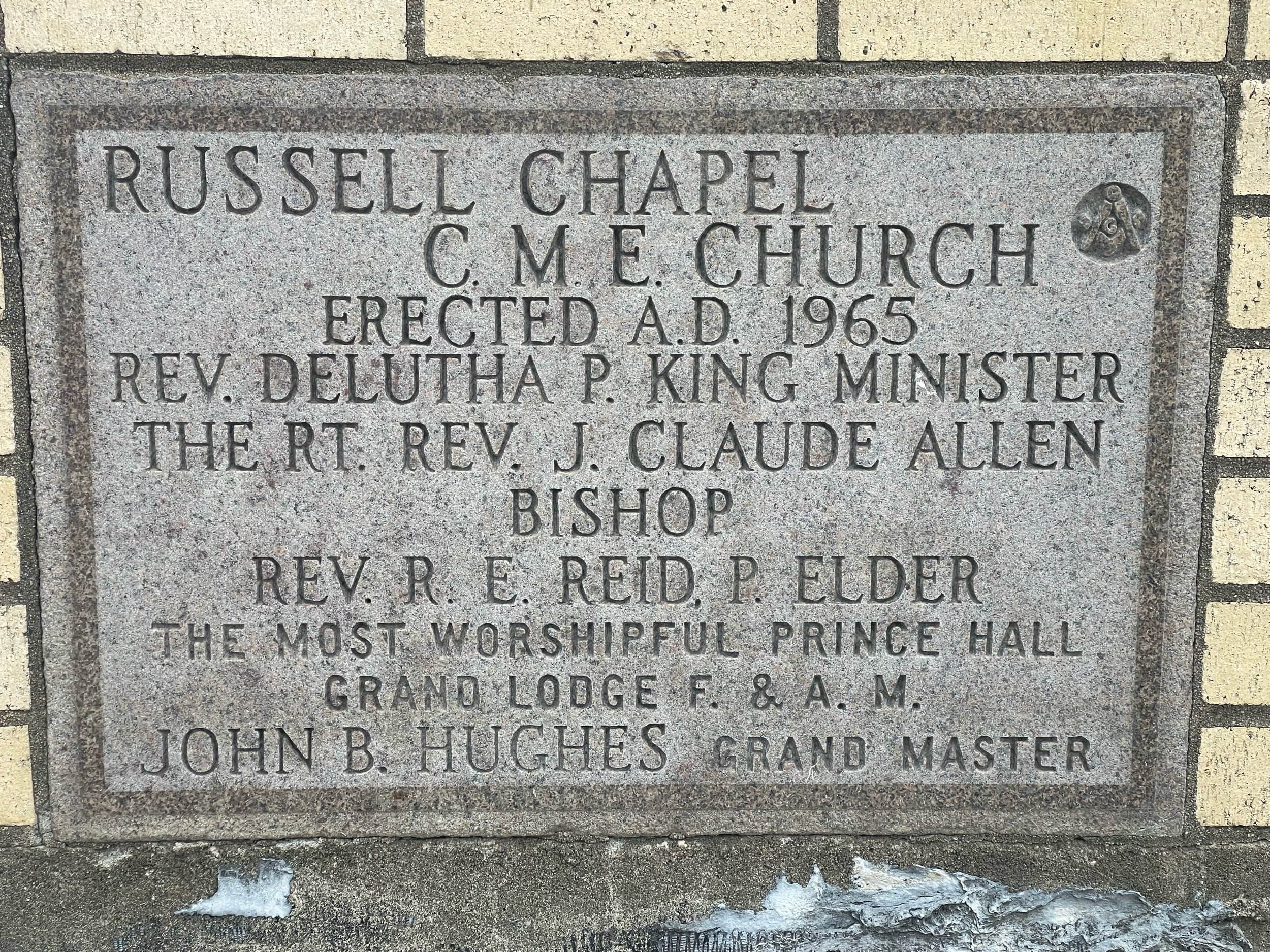
This CoMo 365 blog entry was constructed by Matt Fetterly using these sources:
Bowers, Elaine; Longley, Laura (January 16, 1970). Dr. Martin Luther King. Columbia, Missouri: Columbia Missourian. Missouri Digital Heritage. Accessed January 15, 2023.
Wikipedia contributors. (2022, December 2). Prince Hall Freemasonry in Wikipedia, The Free Encyclopedia. Retrieved 23:08, January 15, 2023.
Wikipedia contributors. (2022, December 4). Prince Hall in Wikipedia, The Free Encyclopedia. Retrieved 23:08, January 15, 2023.
Do you have ideas for future CoMo 365 topics? Did you notice an error?
Email me at como365@protonmail.com or leave a comment below.

